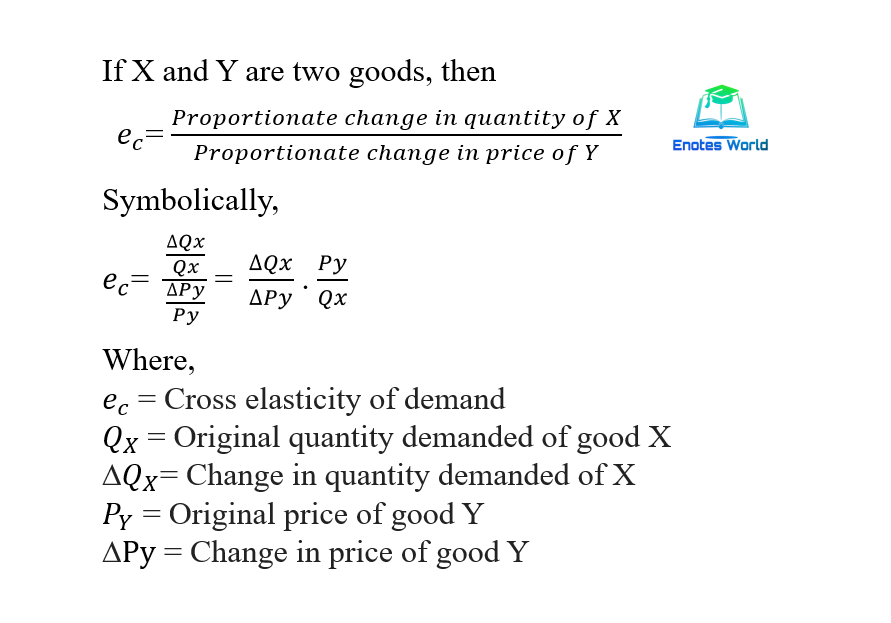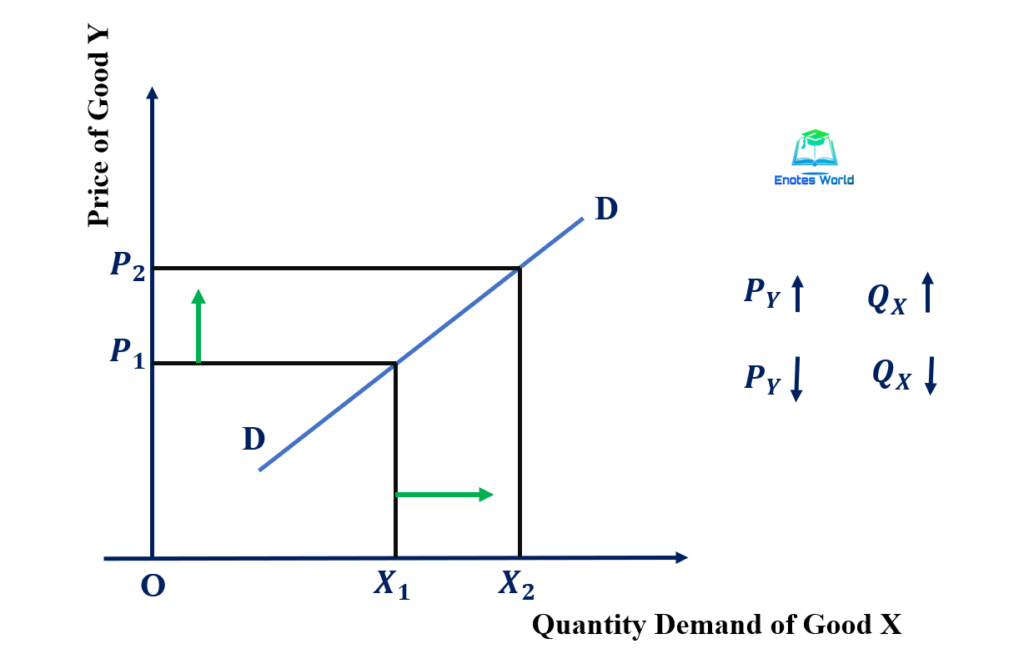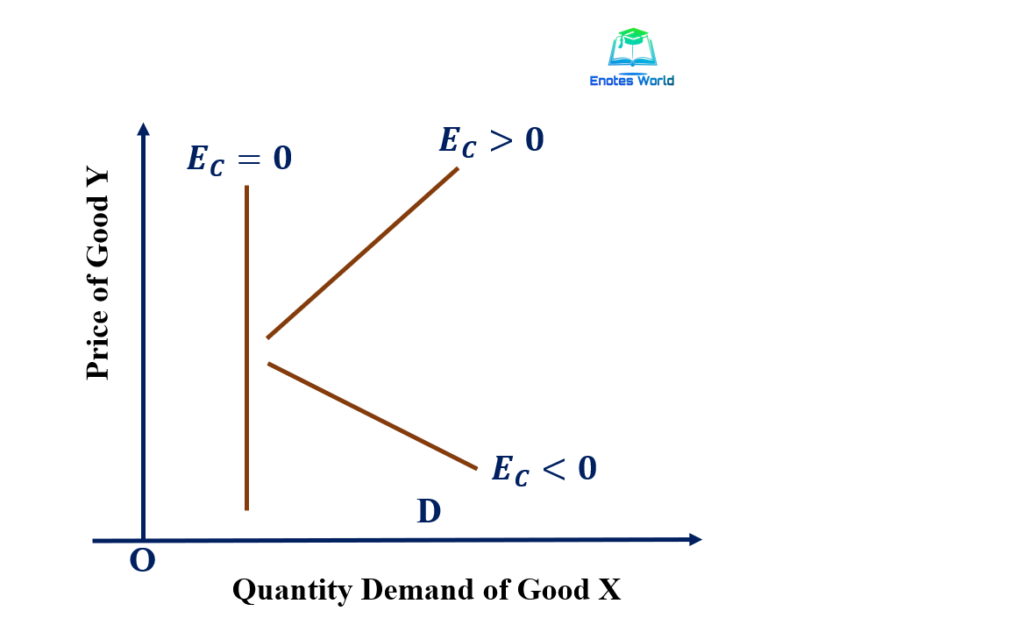Contents
Concept of Cross Elasticity of Demand
The quantity demand of anyone commodity is affected by the change in not only its price but also by a change in the prices of related commodities. The effect changes in quantity demand of any one particular good due to the change in prices of other related goods is measured by cross elasticity of demand. Cross elasticity of demand is thus used to express the effect on the quantity demand of anyone commodity due to changes in the prices of its related goods. Here in this article, we will discuss the concept and degree of cross elasticity of demand.
Cross elasticity of demand measures the responsiveness of quantity demand for a good (say X) to the change in the price of other related goods (say Y). In another word, the degree of responsiveness of quantity demand of one commodity to a change in the price of another commodity is called cross elasticity of demand. It is the measure of the percentage change in quantity demand of a commodity concerning the change in the price of its related commodity.
Cross elasticity of demand of a commodity X concerning the price of another commodity Y can be measured with the help of the following formula;
Ec=Percentage change in the quantity demanded of good X/Percentage change in the price of commodity Y
Symbolically,

Degrees or Types of Cross Elasticity of Demand
Two goods can be related to each other in different ways. They are either a complement to each other or they are substitutes or they are non-related to each other. Based on such a relationship between the goods, cross elasticity of demand can be categorized into three types.
Positive Cross Elasticity (EC> 1)
The cross elasticity of demand becomes positive when the increase in the price of one commodity (say Y) leads to an increase in the demand for the other commodity (say X). It means if two products can be used as a substitute for each other, the cross-elasticity of demand for them is positive. In other words, if some percentage increase in the price of one commodity results in some percentage increase in the quantity demanded of another related commodity, the cross-elasticity of demand is positive.
Substitute goods are a competitor or the rival of each other. For example, tea and coffee is a classic example of substitute goods. When there is an increase in the price of coffee but the price of tea remains constant, then demand for tea will increase. The following figure shows the case of positive cross elasticity of demand.

In the above figure, DD is an upward sloping demand curve showing the positive relationship between change in the price of one commodity and change in the quantity demand of its substitute commodity. When there is an increase in the price of good Y from P1 to P2 the quantity demand for good X has increased from X1 to X2 units. Thus this is the case of positive cross elasticity of demand.
Negative Cross Elasticity (EC< 1)
Cross elasticity of demand becomes negative when a fall in the price of one commodity (Y) leads to an increase in the demand of another related commodity (X), other things remaining the same. If two products are complementarily related to each other then their cross elasticity of demand will be negative.
Complements are goods that we can use in combination with each other goods. In the case of complement goods, a fall in the price of a good increases the demand for its complement. For example, Pen and Ink, Car and Petrol, Computer hardware and software, mobile phone and sim card, are complement goods. Thus, in the case of complement goods, the change in the price of one good and demand for its complement move in opposite directions. For instance, an increase in the price of the mobile phone will decline the demand for sim and vice versa. Such complement relation between mobile and sim card produces a negative value of cross-elasticity of demand.
The following figure shows the case of negative cross elasticity of demand.

In the figure downward sloping DD is the demand curve showing an inverse relationship between the change in the price of one commodity and the resulting change in quantity demand of its complementary good. When the initial price is P1, the resulting demand is X1. With the increase in the price of good Y to P2, the resulting demand for good X has decreased to a lower quantity X2. This is the case of cross elasticity between complementary goods or negative cross elasticity.
Zero Cross Elasticity(EC=0)
Cross elasticity of demand is said to be zero when a change in the price of one commodity (Y) does not affect the demand for another commodity (X). If two goods are not related to each other, for example, tea and Laptop, the cross elasticity of demand will be zero. A change in the price of the laptop is not likely to influence the demand for the Laptop set.
The following figure shows the case of zero price elasticity of demand.

In the above figure, DD is the vertical straight-line demand curve showing no effect of change in the price of any commodity on the demand for another commodity. If we see the cross elasticity between any two non-related or independent products or services then cross elasticity will be zero.
Therefore, cross elasticity describes the relationship between the demand for one commodity and the change in the price of its other related commodities. The following table and figure show the summarized description regarding degrees of cross elasticity of demand.

The above figure has presented three different types of cross elasticity of demand. The following table shows different types of cross-price elasticity and their application in the real world.
| Numerical Measures | Description | Types of goods/ application |
| Positive cross elasticity | Price increase in one commodity leads to an increase in the quantity demand of others. | Substitutes |
| Negative cross elasticity | Price increase in one commodity leads to a decrease in the quantity demand of others. | Complementary |
| Zero cross elasticity | Change in the price of one commodity won’t bring any change in demand for another commodity. | Nonrelated and independent. |
References and Suggested Readings
Dhakal, R. (2019). Microeconomics for Business. Kathmandu: Samjhana Publication Pvt. Ltd.
Kanel, N.R. and et. al. (2016). Business Economics. Kathmandu: Buddha Publications
Mankiw, N.G. (2009). Principles of Microeconomics. New Delhi: Centage Learning India Private Limited
Salvatore, Dominick. (2003). Microeconomics: Theory and Application. Oxford University Press, Inc.
Shrestha, P.P. and et.al. (2019). Microeconomics for Business. Kathmandu: Advance Sarswati Prakashan.